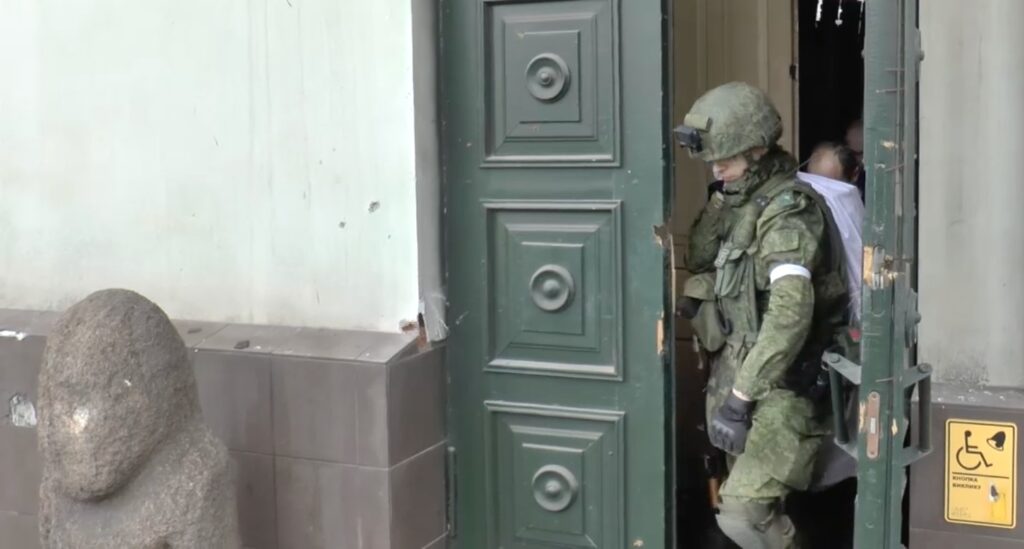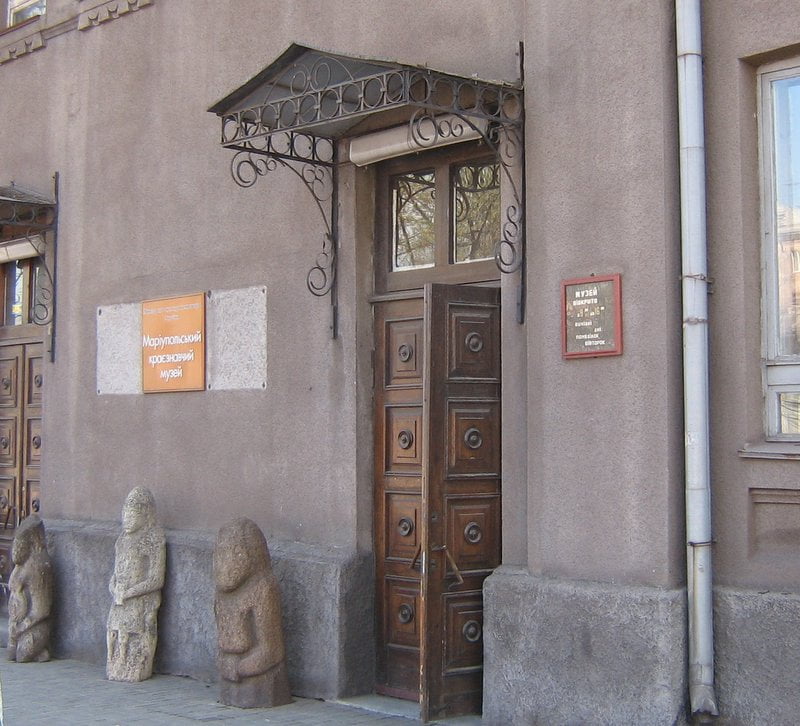The Mariupol National History Museum, built at the beginning of the 20th century (the so-called “Invalids’ Building”), was also destroyed. Before the Russian invasion there were about 53,000 exhibits in its collection – including manuscripts, old prints, paintings, numismatic, archaeological, photographic and natural history collections. The museum library had 17,000 volumes.
Of particular value among the exhibits is the letter of Catherine II to the Greek Christians removed from the Crimean Khanate in 1778-1780 and settled on the coast of the Azov Sea. Equally valuable are an Epitaphios from 1760 and a Gospel book from 1811. Archaeological collections from the site of Amvrosiyivka (findings of the Paleolithic Age from 18-19 thousand years ago), finds from Mariupol burials of the Dneprop-Donetsk culture from the Neolithic Age (discovered in 1930 during the construction of the plant “Azovstal”), anthropomorphic steles, Kurgan stelae, ancient sculptures left by nomadic peoples – the Pechenins, the Torcs and the Polovtsians have also of exceptional value. The numismatic collection includes coins from the period of the Roman Empire, Byzantium, ancient cities of the Northern Black Sea, Moscow Principality, Russian Empire, Republic of Poland, Austro Hungary, USSR). The museum also has a collection of paintings.
As a result of shelling, the building was partially destroyed and burned down. The collections were looted by Russian troops. The collections will be transported to Donetsk, where they will be evaluated and their further use will be determined.


